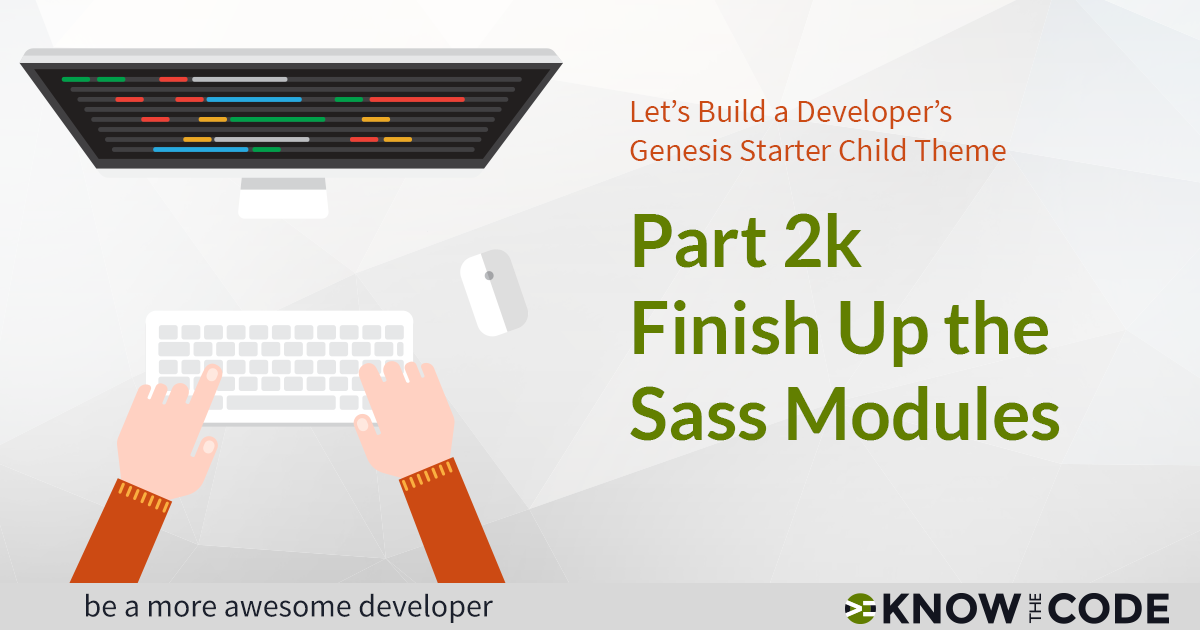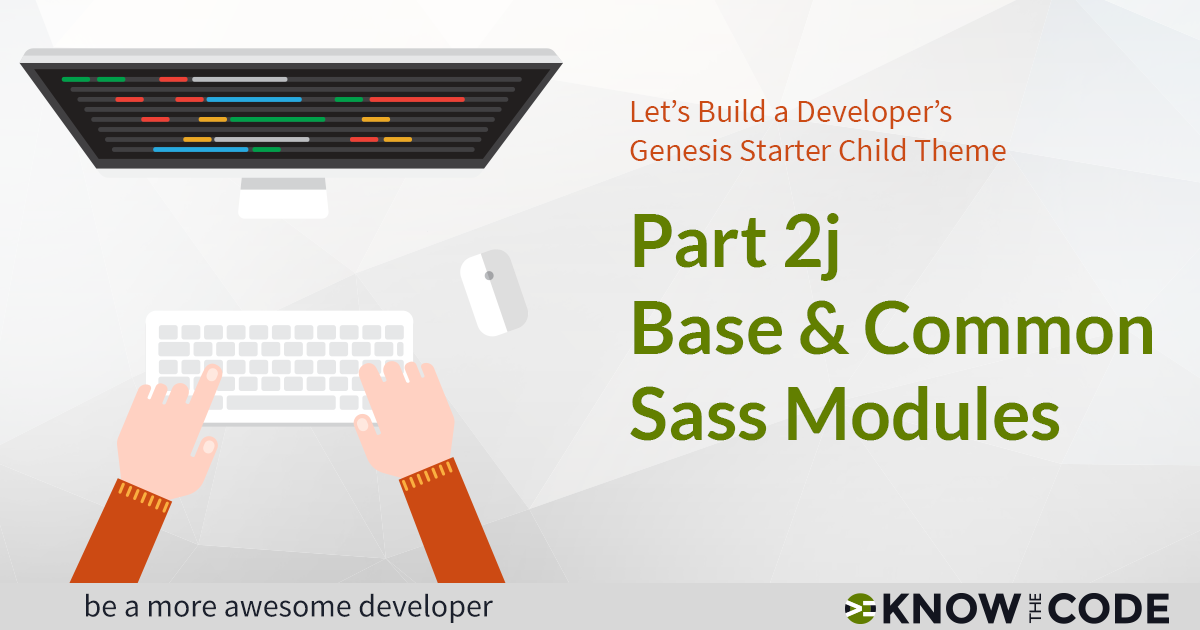WooHoo! You are now done with converting the native CSS stylesheet over into modular Sass. I know that was a long process, but you only needed to do it once. Now you have a codebase that you can use on every single project and site that you build. Quick Summary of What You Learned: It’s Sass and not SASS. You have a modular codebase that you can use on every single project. Color changes are quicker as you change them in one spot and your entire stylesheet changes. Typography changes are quicker. Dimensions are customizable in one spot. It will […]


